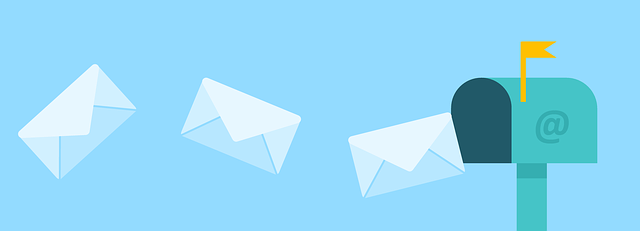Imagine you are standing at the entrance of a bustling marketplace, filled with vendors and shoppers from all walks of life. The air is thick with the aroma of freshly baked goods and the sound of lively conversations. As you observe the scene, you realize that each person in this vibrant crowd has their own unique preferences, needs, and desires.
Just like this bustling marketplace, the world of nonprofit email marketing is a diverse and dynamic space. It is a place where organizations connect with their supporters, share their mission, and rally for a cause. And just as in the marketplace, it is crucial to recognize that not all supporters are the same.
This is where the importance of segmentation in nonprofit email marketing comes into play. By dividing your audience into distinct segments based on their interests, demographics, and engagement levels, you can tailor your messages to each group, increasing relevance and engagement.
In doing so, you can build stronger relationships with your supporters, drive more impactful campaigns, and ultimately make a lasting difference in the world.
Key Takeaways
- Segmentation in nonprofit email marketing is crucial for tailoring messages to different audience segments.
- Personalizing emails based on interests, demographics, and engagement levels leads to higher open rates, click-through rates, and conversions.
- Analyzing data from email campaigns helps optimize segmentation strategy, increase relevance, and improve targeting.
- Refining segmentation tactics and testing different strategies based on data analysis maximizes campaign effectiveness and drives increased engagement and support for nonprofit organizations.
Understand Your Audience
Understanding your audience is crucial in nonprofit email marketing, as it allows you to tailor your messages and engage with them on a deeper level. By personalizing your emails, you can show your donors that you truly value their support and appreciate their individual interests and preferences.
Personalization benefits go beyond just making your donors feel special; it also leads to higher open rates, click-through rates, and conversions. When you send targeted communications, you can focus on specific issues or campaigns that are relevant to different segments of your audience. This helps you deliver more meaningful content that resonates with each donor’s interests and motivations.
So, instead of sending generic emails to everyone, divide your audience into segments and create personalized messages that speak directly to their needs and aspirations.
Divide Your Audience into Segments
To effectively divide your audience into segments, consider using criteria such as age, gender, and location. This will help you tailor your email marketing campaigns to specific groups, ensuring that your message resonates with each segment.
Additionally, consider factors like interests, donation history, and engagement level to further refine your segments and deliver personalized content that drives action. By understanding the unique characteristics of each segment, you can maximize the impact of your nonprofit email marketing efforts.
Use Criteria such as Age, Gender, and Location
Employing criteria such as age, gender, and location is essential for effectively tailoring nonprofit email marketing campaigns. By segmenting your audience based on these factors, you can create targeted outreach that resonates with recipients on a personal level.
Here’s how segmentation can make a difference:
-
Improve engagement: By sending emails that are relevant to a specific demographic, you increase the chances of capturing their attention and driving action.
-
Increase conversion rates: Personalized content that speaks directly to individuals’ needs and interests is more likely to inspire them to take the desired action.
-
Enhance donor retention: When donors receive emails that address their specific concerns or interests, they feel valued and are more likely to continue supporting your cause.
-
Optimize resources: By focusing your efforts on the segments that are most likely to respond positively, you can allocate your time, energy, and resources more efficiently.
Considering interests, donation history, and engagement level further refines your segmentation strategy, allowing you to create even more impactful emails.
Consider Interests, Donation History, and Engagement Level
Taking into account individuals’ interests, donation history, and engagement level can greatly enhance the effectiveness of your nonprofit email campaigns. By segmenting your email list based on these factors, you can create personalized content that resonates with each recipient.
Donor retention is crucial for the success of your nonprofit, and segmenting your audience allows you to tailor your messages to each segment, increasing the likelihood of engagement and ultimately, donations. By analyzing donation history, you can identify individuals who’ve previously shown a willingness to support your cause and target them with specific appeals.
Additionally, considering interests and engagement level allows you to send content that’s relevant and valuable to each recipient, increasing the chances of them opening, reading, and responding to your emails.
Transitioning into the subsequent section, let’s explore how to tailor your messages to each segment.
Tailor Your Messages to Each Segment
Connect with your donors on a deeper level by crafting personalized messages that speak directly to their needs and values, because, as the saying goes, ‘a little goes a long way’.
To effectively communicate with your donors, it’s important to use personalization techniques that make them feel seen and understood. Here are some ideas to consider:
- Segment your donors based on their interests and preferences.
- Send targeted emails that focus on specific areas of interest.
- Tailor your messages to reflect the values and motivations of each segment.
Segment your donors based on their donation history.
- Recognize and appreciate their past contributions.
- Provide updates on how their donations have made a difference.
By tailoring your messages to each segment, you can increase relevance and engagement with your donors. This will ultimately lead to stronger relationships and continued support for your nonprofit organization.
Increase Relevance and Engagement
To enhance the connection with donors, it’s crucial to personalize your messages, ensuring they resonate with their unique interests and values.
By segmenting your email list and tailoring your content accordingly, you can improve targeting and increase relevance and engagement. When you send personalized messages that speak directly to each donor’s specific interests, you show them that you understand and appreciate their individuality.
This level of personalization not only makes your donors feel valued, but it also increases the likelihood that they’ll engage with your emails and take action. Whether it’s by volunteering, donating, or spreading the word about your cause, personalized content can inspire your donors to get involved.
By tracking and measuring the results of your segmented email campaigns, you can gain valuable insights into what resonates with your donors and refine your strategies for even greater success.
Track and Measure Results
Monitor your email open rates, click-through rates, and conversions to gauge the effectiveness of your nonprofit email marketing campaigns. By tracking these metrics, you can identify which emails are resonating with your audience and adjust your content accordingly.
Analyze the data you gather to optimize your segmentation strategy and ensure that you are delivering targeted and relevant messages to your supporters.
Monitor Open Rates, Click-through Rates, and Conversions
Keep an eye on your email open rates, click-through rates, and conversions, so you can gauge the effectiveness of your nonprofit email marketing efforts. Tracking performance is crucial to improving targeting and ensuring that your messages are resonating with your audience.
By monitoring these metrics, you can see how many recipients are actually opening your emails, how many are clicking on your links, and how many are taking action and converting into donors or volunteers. This data provides valuable insights into what is working and what isn’t, allowing you to make informed decisions and optimize your email campaigns.
In the next section, we’ll discuss how analyzing this data can help you further refine and optimize your segmentation strategy.
Analyze Data to Optimize Segmentation Strategy
Now that you’ve monitored open rates, click-through rates, and conversions, it’s time to analyze the data and optimize your segmentation strategy. By doing so, you can ensure that your nonprofit email marketing campaigns are reaching the right audience and delivering impactful messages.
Here are four reasons why analyzing data to optimize your segmentation strategy is crucial:
-
Maximize engagement: By understanding which segments are most responsive to your emails, you can tailor your content and increase engagement.
-
Improve targeting: Analyzing data allows you to identify patterns and characteristics of your most valuable donors, allowing you to target similar individuals effectively.
-
Increase conversions: By refining your segmentation strategy based on data analysis, you can send more personalized and relevant emails, leading to higher conversion rates.
-
Optimize campaign performance: Data analysis enables you to identify areas of improvement in your campaigns, helping you make data-driven decisions to optimize future campaigns.
Now that you’ve optimized your segmentation strategy, let’s explore how you can continuously refine and improve your nonprofit email marketing efforts.
Continuously Refine and Improve
Improve your nonprofit email marketing strategy by consistently refining and enhancing your segmentation tactics. Refine targeting and enhance personalization to maximize the effectiveness of your campaigns.
By analyzing data and continuously monitoring the performance of your segments, you can identify areas for improvement and make data-driven decisions. Test different segmentation strategies and measure their impact on open rates, click-through rates, and conversions. Use A/B testing to compare the effectiveness of different segmentation criteria and messaging approaches.
Continuously refine your segments based on user behavior, preferences, and demographics. Personalize your email content by addressing recipients by their names and tailoring the message to their specific interests and needs.
By consistently refining and improving your segmentation tactics, you can deliver more relevant and engaging content to your audience, ultimately driving increased engagement and support for your nonprofit organization.
Frequently Asked Questions
How can I determine the specific needs and preferences of my nonprofit email marketing audience?
To determine the specific needs and preferences of your nonprofit email marketing audience, start by utilizing symbolism in your approach. Think of your audience as puzzle pieces, each with unique traits and interests.
To collect audience feedback, consider using surveys, feedback forms, and social media polls. This will help you gain valuable insights into their preferences, allowing you to tailor your email marketing strategy accordingly.
By understanding your audience’s preferences, you can create more personalized and effective email campaigns that resonate with them.
What are some common mistakes to avoid when segmenting my nonprofit email marketing audience?
Common mistakes to avoid when segmenting your nonprofit email marketing audience include not conducting thorough research to understand their needs and preferences. Also, not using data to inform your segmentation strategy and failing to regularly update your segments as your audience evolves.
On the other hand, best practices for effective segmentation involve analyzing past campaign performance, using demographic and behavioral data, and creating personalized content for each segment.
By avoiding these mistakes and following best practices, you can optimize your nonprofit email marketing efforts and drive better results.
How can I ensure that my messages are personalized and resonate with each segment of my nonprofit email marketing audience?
To ensure personalized and resonating messages for your nonprofit email marketing audience, utilize effective personalization techniques. According to a study by Experian, personalized emails generate 6 times higher transaction rates.
Start by conducting audience analysis to understand their preferences and needs. Tailor your content, subject lines, and calls to action accordingly.
By doing so, you’ll increase engagement and build stronger relationships with your audience, ultimately driving more impactful results for your nonprofit organization.
What are some effective strategies for increasing engagement and relevance with my nonprofit email marketing audience?
To improve response rates and enhance donor relationships in your nonprofit email marketing, you need effective strategies.
Start by crafting compelling subject lines that grab attention.
Personalize your emails based on donor preferences and past interactions.
Use segmentation to send targeted messages that resonate with each audience segment.
Incorporate storytelling and emotional appeals to create a connection.
Make your emails visually appealing and mobile-friendly.
Finally, track and analyze your email metrics to continuously refine and optimize your strategies.
What are the key metrics I should be tracking to measure the success of my nonprofit email marketing campaigns?
To measure the success of your nonprofit email marketing campaigns, it’s crucial to track key email marketing analytics. Start by monitoring the open rates, click-through rates, and conversion rates of your emails. These metrics will help you gauge the engagement and effectiveness of your campaigns.
Additionally, A/B testing is essential to determine what strategies resonate best with your audience. By comparing different versions of your emails, you can optimize your content and increase your campaign’s impact.
Conclusion
Congratulations! You’ve successfully navigated the world of nonprofit email marketing and discovered the power of segmentation.
By understanding your audience and tailoring your messages to each segment, you’ve unlocked a treasure trove of relevance and engagement.
Like a skilled sculptor, you’ve chiseled away the excess to reveal the masterpiece of increased results.
And the best part? This journey is never-ending. Constantly refining and improving, you’ll continue to shape your email marketing strategy into a work of art that captivates and inspires.
Keep up the great work!








